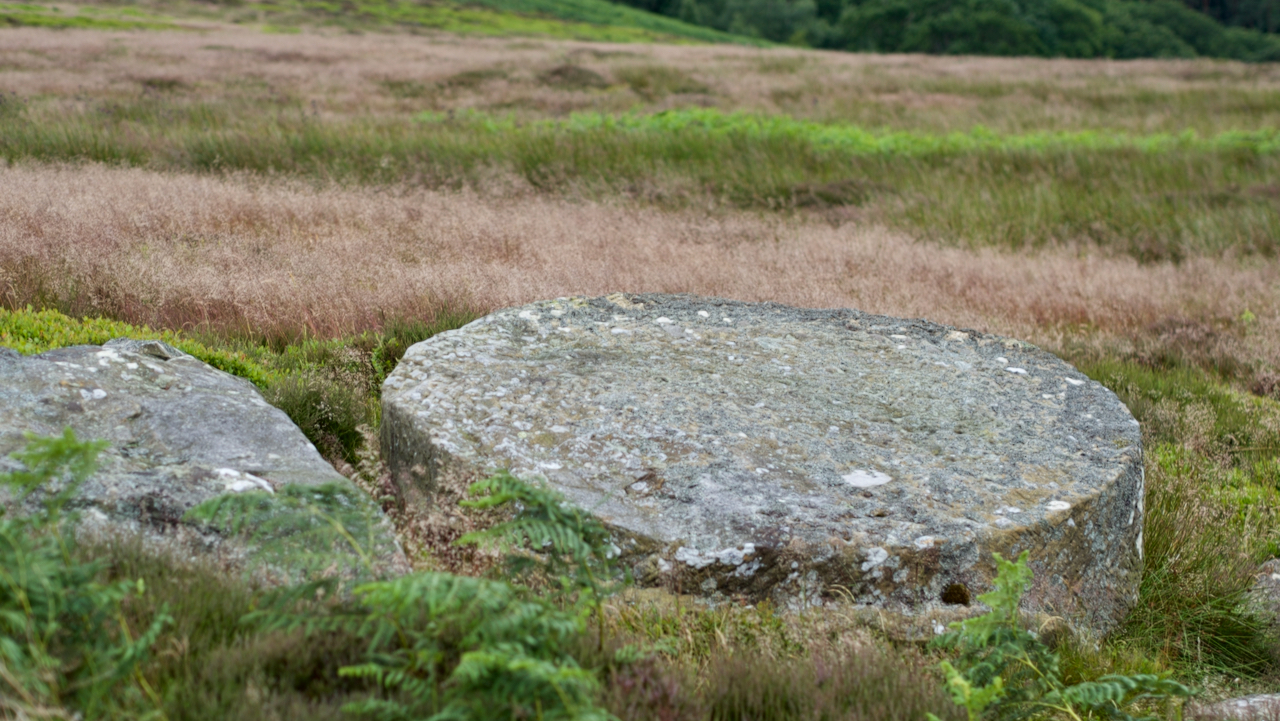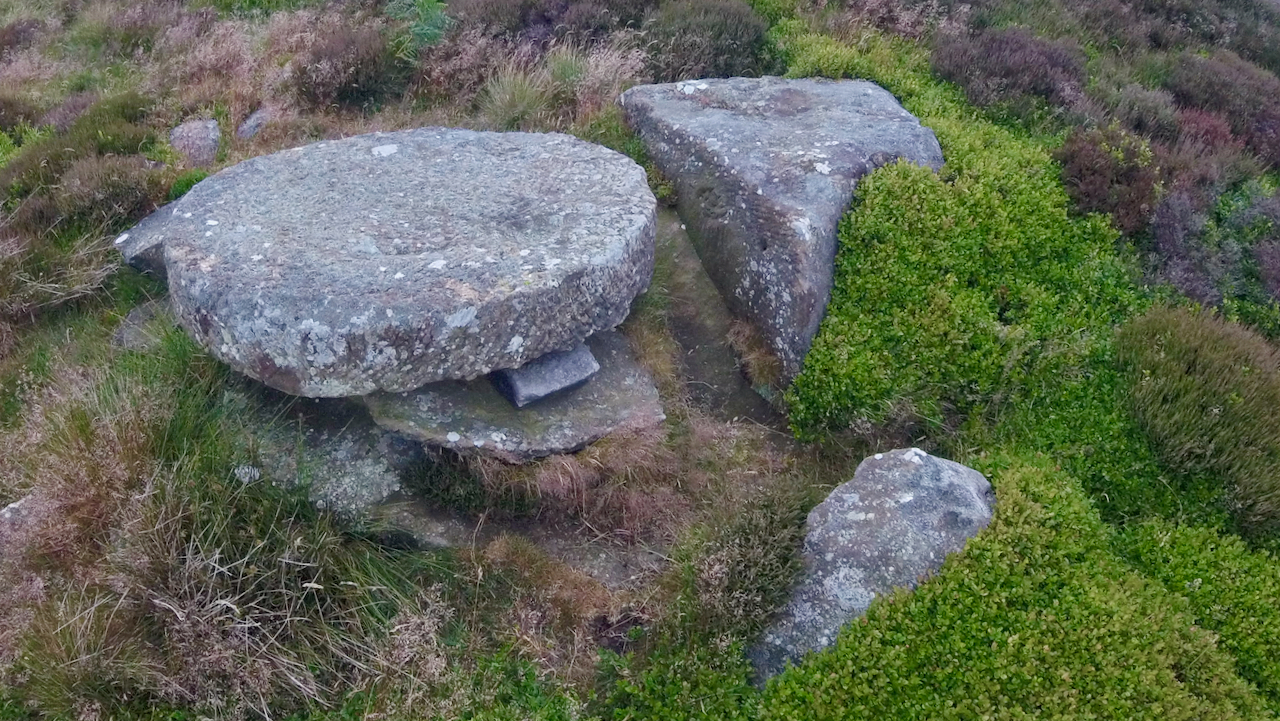A short excursion to look at the unfinished millstone just off the Baysdale road.
I’ve been before but the same old questions remain. Why was it abandoned? Who abandoned it? And when?

The NYM Historic Environment Record dates it to “post medieval” which is anytime between 1540 and 17991North York Moors Historic Environment Record (HER) No: 1035.
The bedrock at this location is recorded as undifferentiated sandstone, siltstone and mudstone2Bgs.ac.uk. (2022). Geology of Britain viewer | British Geological Survey (BGS). [online] Available at: https://mapapps.bgs.ac.uk/geologyofbritain/home.html [Accessed 6 Jul. 2022]., none of which make particularly good millstones but probably good enough for proggin (cattle food)3Hartley, Marie and Joan Ingilby. “Life and Tradition on The Moorlands of North-East Yorkshire”. Page 40. J.M. Dent & Son. 1972 ISBN 1 870071 54 9.. At Rievaulx, French Burrstone was used grinding wheat for flour, and millstone grit from the Derbyshire Peak for proggin4Ibid..
Certainly in southern England, French stones had been imported, usually fetched by cart from Southampton or ferried by river from London since Medieval times. In the 14th-century milling became less profitable, and many mills changed from French stones to the cheaper Welsh and Peak District stones5https://www.facebook.com/Mediaevalgirl (2012). Millstones for Medieval Manors – Medievalists.net. [online] Medievalists.net. Available at: https://www.medievalists.net/2012/02/millstones-for-medieval-manors/ [Accessed 6 Jul. 2022]..
Our unfurnished millstone points then to a poor quality use. Perhaps that’s the reason it was abandoned. Perhaps a flaw was found.
Once the millstone is shaped and transported to the mill, it would have to be finally dressed. The miller would ensure the grinding face was flat by proving it with a staff smeared with red rudd6A coloured paste used during the tupping of sheep.. Next furrows or grooves would have to be chiselled out using a mill bill or pick.[/mfn]. Furrows must be of the correct depth with a straight and sloping side. They act as scissors with those on the top stone during the grinding7Hartley, Marie and Joan Ingilby. “Life and Tradition on The Moorlands of North-East Yorkshire”. Plates 138-142. J.M. Dent & Son. 1972 ISBN 1 870071 54 9..
There were two mills in Kildale — a corn mill beside the waterfall and a lower textile mill. Both mills were destroyed in 1840 when the fish ponds burst their banks.
- 1North York Moors Historic Environment Record (HER) No: 1035
- 2Bgs.ac.uk. (2022). Geology of Britain viewer | British Geological Survey (BGS). [online] Available at: https://mapapps.bgs.ac.uk/geologyofbritain/home.html [Accessed 6 Jul. 2022].
- 3Hartley, Marie and Joan Ingilby. “Life and Tradition on The Moorlands of North-East Yorkshire”. Page 40. J.M. Dent & Son. 1972 ISBN 1 870071 54 9.
- 4Ibid.
- 5https://www.facebook.com/Mediaevalgirl (2012). Millstones for Medieval Manors – Medievalists.net. [online] Medievalists.net. Available at: https://www.medievalists.net/2012/02/millstones-for-medieval-manors/ [Accessed 6 Jul. 2022].
- 6A coloured paste used during the tupping of sheep.
- 7Hartley, Marie and Joan Ingilby. “Life and Tradition on The Moorlands of North-East Yorkshire”. Plates 138-142. J.M. Dent & Son. 1972 ISBN 1 870071 54 9.

Leave a Reply